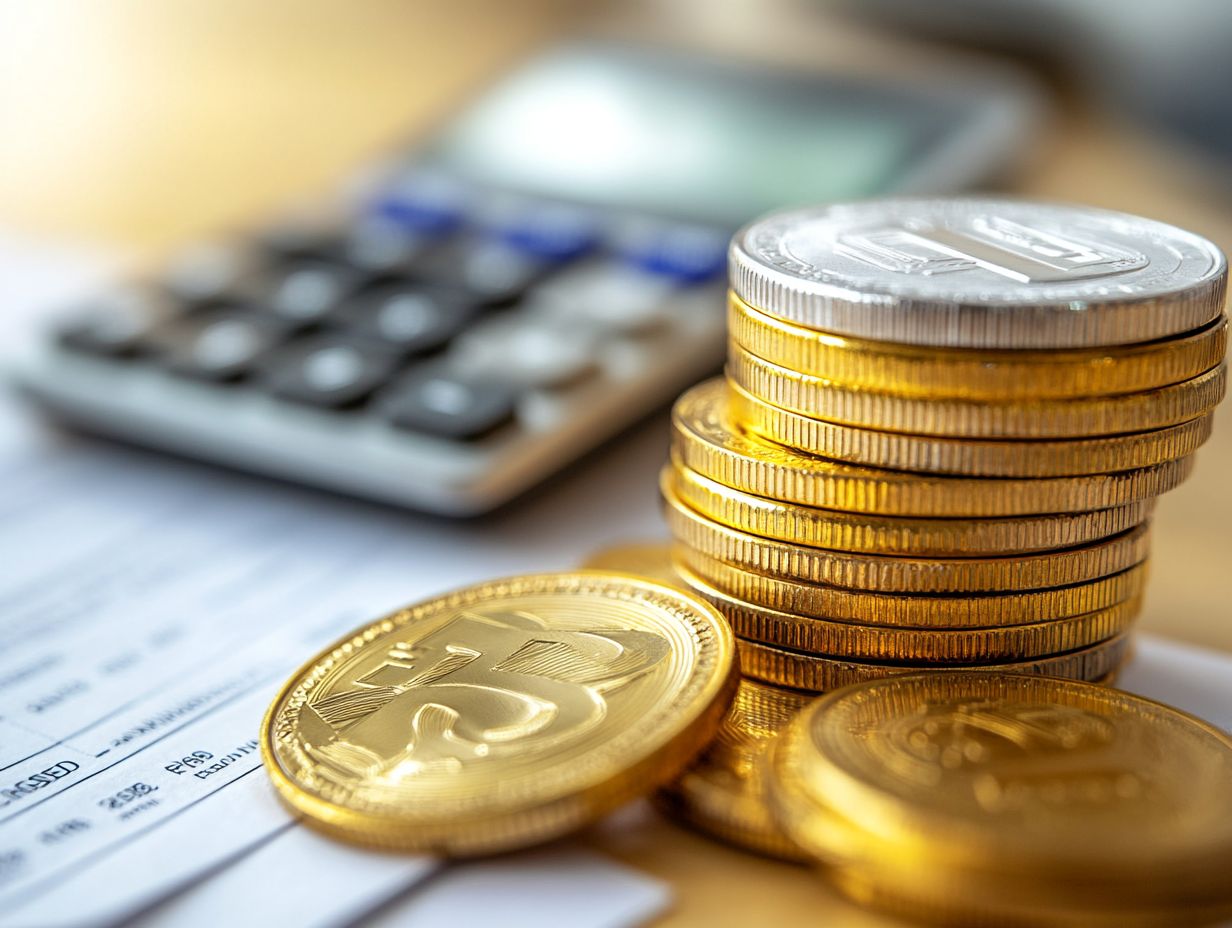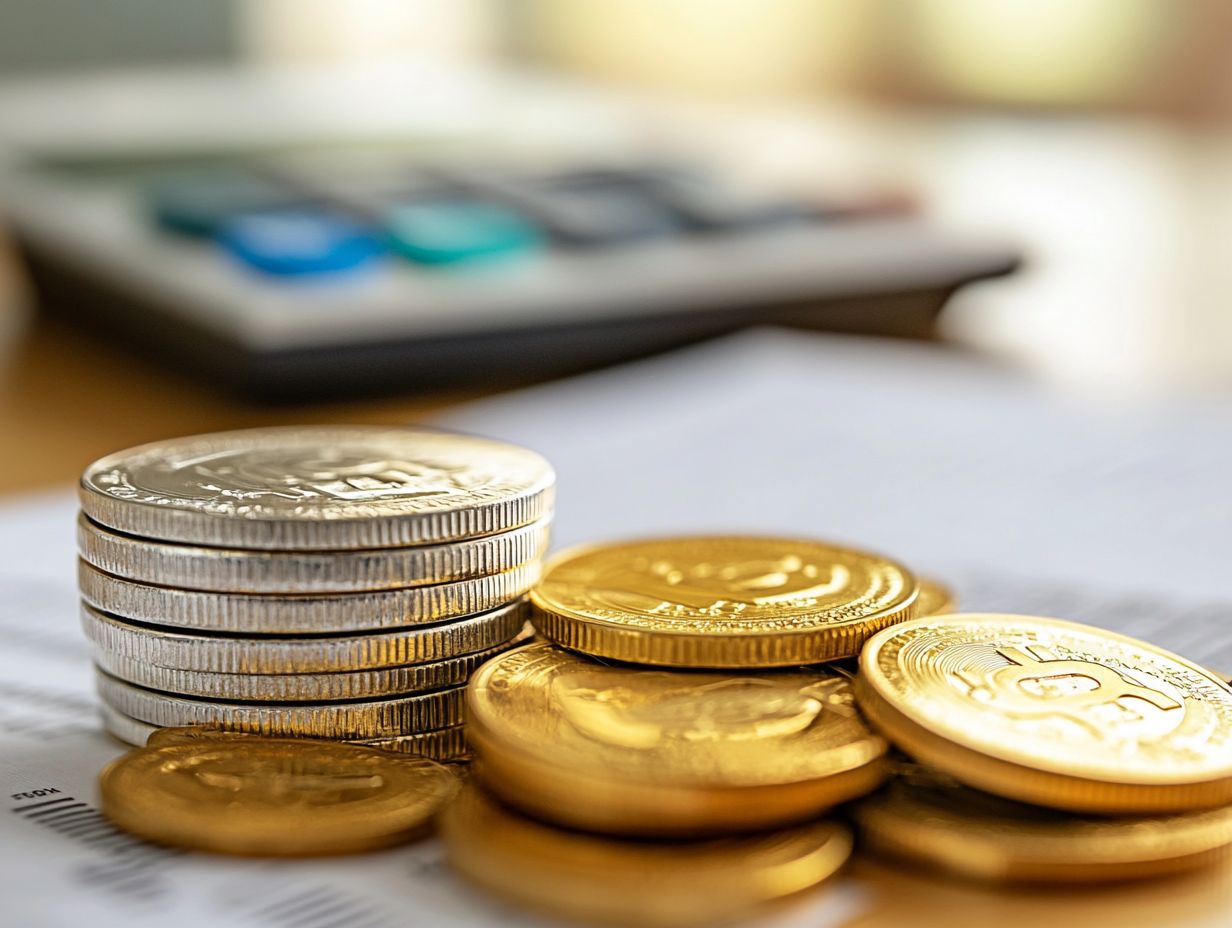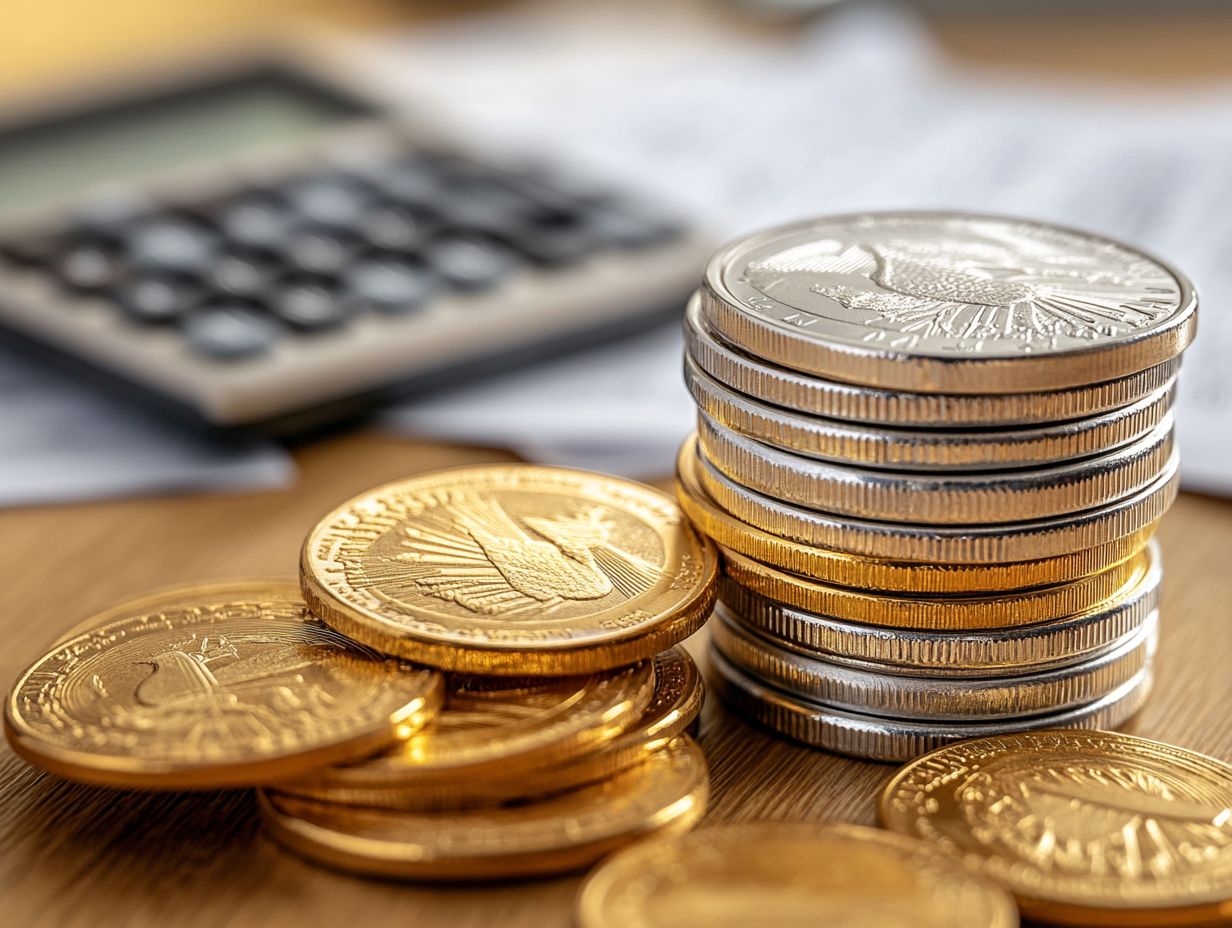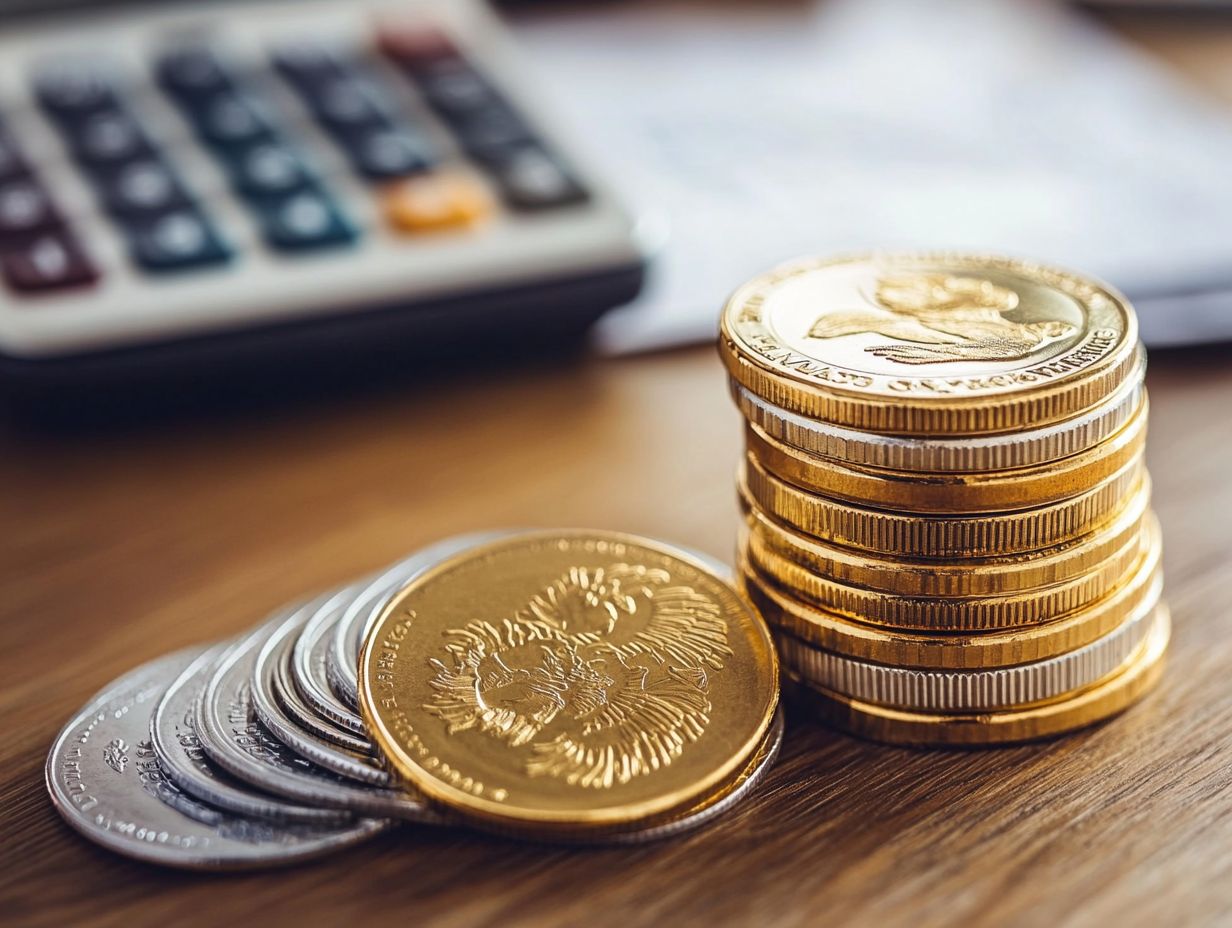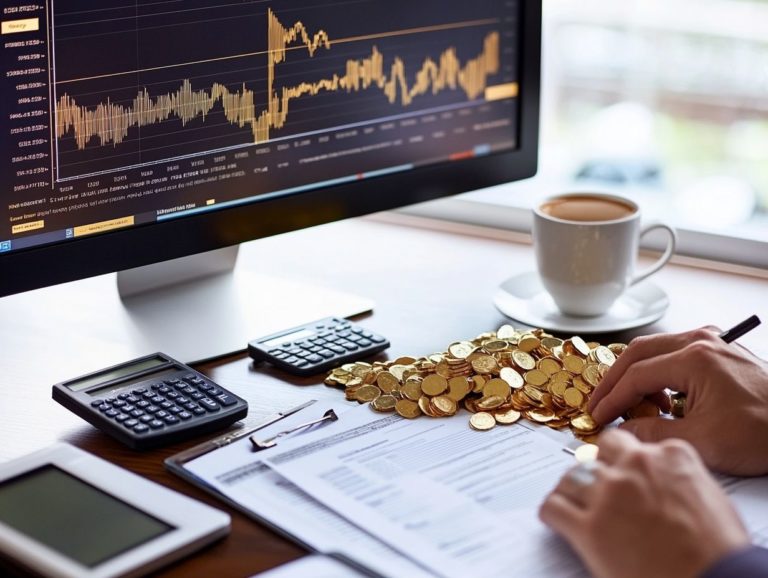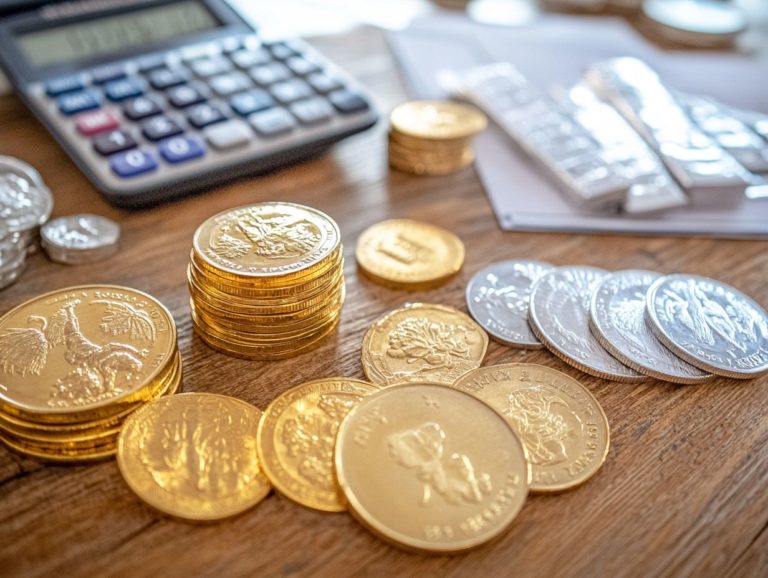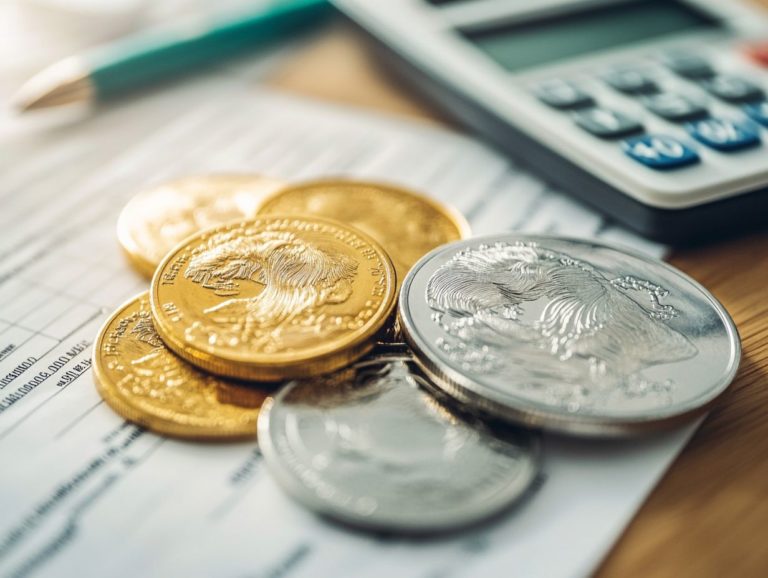The Relationship Between Precious Metals and Capital Gains Tax
Investing in precious metals can be a gratifying endeavor, yet it carries unique complexities, especially regarding taxes.
This article explores various types of precious metals, the details of capital gains tax, and how these investments are taxed based on your holding periods.
It also highlights effective strategies to minimize your tax liability and emphasizes the value of consulting a financial advisor.
By learning to navigate this intricate landscape, you can make well-informed decisions about your investments.
Contents
- Key Takeaways:
- Understanding Precious Metals
- Capital Gains Tax Overview
- How Precious Metals are Taxed
- Strategies for Minimizing Taxes on Precious Metals
- Timing Your Sales
- Utilizing Tax-Advantaged Accounts
- The Role of a Financial Advisor
- Frequently Asked Questions
- What is the relationship between precious metals and capital gains tax?
- How is capital gains tax calculated for precious metals?
- Are all types of precious metals subject to capital gains tax?
- What is the current capital gains tax rate for precious metals?
- Can capital gains tax on precious metals be minimized or avoided?
- Is there a difference in capital gains tax for physical versus paper precious metal investments?
Key Takeaways:
- Precious metals, such as gold and silver, can be valuable investment opportunities.
- Capital gains tax is a tax on the profit made from the sale of precious metals.
- Timing sales and utilizing tax-advantaged accounts can help minimize taxes on precious metal investments.
Understanding Precious Metals
Understanding precious metals is essential for you as an investor aiming to broaden your investments, especially in today’s ever-changing market landscape.
Metals such as gold, silver, and platinum have long been esteemed as safe-haven assets, offering stability against inflation and market fluctuations.
As global economies experience ups and downs, the demand for precious metals is rising, creating a wealth of investment opportunities and insights into their value trends.
Staying informed about investment news helps you understand how geopolitical and economic factors impact these commodities, reinforcing their role in your investment strategies.
Types of Precious Metals
There are various types of precious metals, each offering unique characteristics and investment potential, including gold, silver, platinum, and palladium, along with lesser-known rare earths that are capturing more attention in today’s market.
Gold, often viewed as a safe-haven asset, showcases remarkable durability and is widely sought after for jewelry and electronics.
Silver, renowned for its excellent conductivity, plays a crucial role in solar panels and medical technology, making it an incredibly versatile asset.
Platinum and palladium, prized for their rarity, are heavily utilized in catalytic converters, contributing significantly to environmental efforts.
Meanwhile, rare earths, while not typically classified as precious metals, are vital for advancing technologies such as electric vehicles and renewable energy systems. This not only highlights their increasing market demand but also underscores the investment opportunities they present for forward-thinking investors like you.
Investment Opportunities
Investment opportunities in precious metals are abundant, encompassing a range of avenues such as direct ownership of bullion, mining stocks, and exchange-traded funds (ETFs) that track the performance of these prized commodities.
These investment vehicles not only serve those looking to hedge against inflation or economic uncertainties but also attract individuals seeking to diversify their portfolios.
ETFs, for example, offer a straightforward way for you to gain exposure to gold and silver without the complications of storage and security.
On the other hand, investing in major mining companies can present the potential for significant returns; however, it’s crucial for you to keep an eye on market news, as fluctuations can affect both commodities and stocks.
By staying informed about industry trends and economic indicators, you’ll have the power to make sound decisions and adapt your strategies as needed.
Capital Gains Tax Overview
Capital gains tax plays a crucial role in the investment landscape, especially when it comes to precious metals, as it directly affects the profitability of your investment choices.
Understanding the details of these taxes is essential for any investor eager to maximize returns on assets like gold, silver, and other precious metals.
This overview will explain what capital gains tax means, how it’s calculated, and the implications it holds for various types of investments, ensuring you are well-equipped for the upcoming tax season.
Definition and Calculation
Capital gains tax is the tax you owe on the profit you make from selling an asset, including your investments in precious metals. The calculation hinges on several factors, notably the purchase price and the selling price of the asset.
When you sell precious metals like gold or silver, the profit you make—the capital gain—is the difference between what you initially paid and what you receive upon sale. For instance, if you buy gold coins for $1,000 and later sell them for $1,500, your taxable gain would be $500.
It’s essential to understand that capital gains tax can vary significantly based on how long you’ve held the asset. If you hold it for a short term, typically one year or less, you’ll face higher ordinary income tax rates on those gains.
On the other hand, long-term gains, which are for assets held over a year, benefit from lower tax rates. This variance makes it crucial for you to plan your selling strategies wisely to maximize your returns.
How Precious Metals are Taxed
Precious metals are subject to capital gains tax upon sale. The tax implications can vary based on factors such as holding period and current market value at the time of sale.
It’s crucial for you to understand how your investments in gold, silver, and other metals will be taxed when you decide to liquidate. This knowledge is essential for effective long-term financial planning and optimizing your investment returns.
Long-term vs. Short-term Gains
Knowing the difference between long-term and short-term gains affects how much tax you pay on your profits. It also shapes your overall investment strategy.
Be mindful that short-term capital gains—applicable to assets held for one year or less—are taxed at ordinary income tax rates. These rates can be notably higher than those for long-term gains.
When you hold your assets for over a year, you benefit from long-term capital gains, which often come with reduced tax rates, making them much more advantageous. For example, if you purchase gold bullion and decide to sell it after just six months, you could face a heftier tax burden than someone who holds that same investment for two years.
Grasping these differences is crucial for optimizing your tax liabilities and refining your investment decisions in the ever-changing landscape of the precious metals market.
Unlock Savings: Exemptions and Unique Situations
There are specific exemptions and unique situations regarding capital gains tax that you should keep in mind. Certain types of sales may not even trigger capital gains tax.
For example, if you gift precious metals to family members or friends, you can do so without incurring capital gains tax as long as the recipient holds onto the assets. In a similar vein, inheritances typically come with an exemption from immediate capital gains tax liabilities, allowing heirs to enjoy the full value of the asset without any upfront payments.
Transactions below a certain threshold, particularly in the realm of collectibles and small sales, can qualify for exemptions. Grasping these nuances gives you the power to navigate the intricate landscape of precious metals investment and ensures you maximize your financial benefits.
Strategies for Minimizing Taxes on Precious Metals
By employing effective strategies to minimize taxes on your precious metals investments, you can significantly enhance your overall returns. This approach enables you to retain more of your profits by utilizing a range of tax-efficient techniques and tools specifically designed for investors like you.
Act now to discover proven strategies that can maximize your returns! Start implementing these strategies today for a brighter financial future!
Timing Your Sales
Timing your sales of precious metals can significantly impact your taxes on profits from selling investments. Therefore, it is essential to grasp market trends and identify optimal sale periods to maximize your returns.
For instance, by closely monitoring fluctuations in gold or silver prices and deciding to sell during a peak, you enhance your profit potential. You also gain the ability to strategically plan your tax payments. Analyzing market cycles and considering historical price rallies enables you to pinpoint opportunities that align with your personal investment goals.
Staying informed about governmental tax policies and any upcoming changes can provide you with a crucial edge. Engaging with financial advisors or utilizing platforms that track precious metal market trends can elevate your decision-making, empowering you to navigate the complexities of capital gains tax more effectively.
Utilizing Tax-Advantaged Accounts
Utilizing tax-advantaged accounts, such as IRAs, can be a savvy strategy for investors seeking to mitigate capital gains tax on precious metals investments.
By taking advantage of these specialized accounts, you can postpone tax liabilities until you begin making withdrawals. This allows your investments to grow tax-deferred over time. You won’t pay taxes on growth until you take money out, significantly enhancing your overall returns.
Tax-advantaged accounts also provide a hedge against inflation and market volatility, making them an appealing choice for diversifying your portfolio. Leveraging these accounts effectively can lead to increased wealth accumulation and a more secure financial future.
The Role of a Financial Advisor
The role of a financial advisor is essential for you as an investor, especially when navigating the intricate world of precious metals investments. They can help you craft effective tax strategies and maximize your returns, even in a volatile market.
Seeking Professional Guidance
Seeking professional guidance from a financial advisor can provide invaluable insights into the precious metals market, empowering you to make informed decisions that align perfectly with your financial goals.
Tailored investment strategies crafted by these experts can help you navigate the complexities of this volatile sector. This ensures that your portfolio remains both diversified and resilient.
Sound tax advice related to precious metals can optimize your returns. Financial advisors understand the nuances of capital gains and tax implications for different investment vehicles.
By leveraging their expertise, you can protect your wealth while capitalizing on opportunities, making the most of market fluctuations. Ultimately, the support of financial advisors transforms uncertainty into a strategic advantage, empowering you to achieve long-term financial success.
Frequently Asked Questions
What is the relationship between precious metals and capital gains tax?
The relationship between precious metals and capital gains tax refers to the tax implications of investing in precious metals. Any profits made from buying and selling precious metals, such as gold or silver, are subject to capital gains tax.
How is capital gains tax calculated for precious metals?
Capital gains tax for precious metals is calculated based on the difference between the purchase price and the selling price of the metal. This difference is known as the capital gain and is subject to the applicable tax rate.
Are all types of precious metals subject to capital gains tax?
No, not all precious metals are subject to capital gains tax. Only those considered “investment grade” are subject to the tax, such as gold, silver, platinum, and palladium. Collectible or numismatic metals, such as rare coins, are exempt from capital gains tax.
What is the current capital gains tax rate for precious metals?
The capital gains tax on precious metals depends on how long you hold them. If you keep the metal for less than a year, it’s taxed as ordinary income. If you hold it for over a year, the tax rate varies from 0% to 28% based on your income.
Can capital gains tax on precious metals be minimized or avoided?
Yes, you can minimize or even avoid capital gains tax on precious metals. One effective method is to hold your metal for at least a year to qualify for a lower tax rate. Investing through a tax-advantaged account, like an IRA, can also help defer taxes.
Is there a difference in capital gains tax for physical versus paper precious metal investments?
Yes, physical and paper investments face different tax treatments. Physical metals, like gold coins or bars, incur capital gains tax. In contrast, paper investments such as ETFs or mining stocks are taxed as regular investment income.




